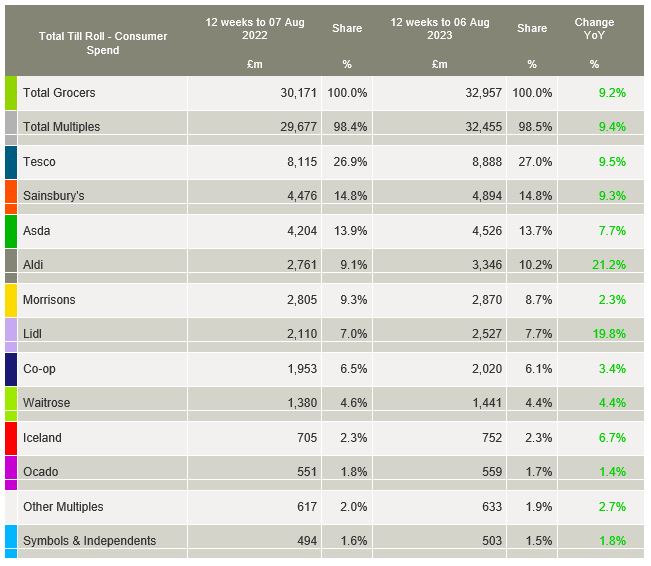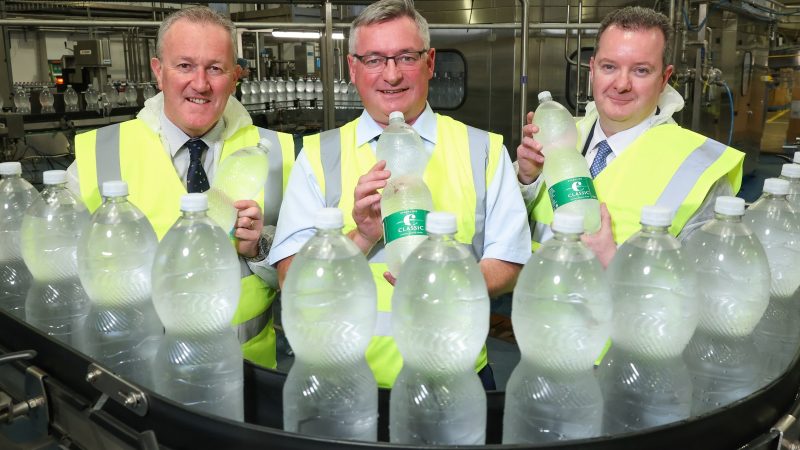Grocery price inflation down again but showers dampen demand for summer favourites

Grocery price inflation has fallen again, now standing at 12.7% for the four weeks to 6th August 2023.
According to the latest data from Kantar, grocery price inflation fell by 2.2 percentage points, with the prices of some staples, such as milk, edging down compared with earlier in the year. Shoppers paid £1.50 for four pints last month, down from £1.69 in March.
Overall take-home grocery sales increased by 6.5% over the same period, down from 10.4% last month.
The latest slowdown in price rises is the second sharpest monthly fall since Kantar started monitoring grocery inflation in this back in 2008.
“Prices are still up year-on-year across every supermarket shelf, but consumers will have been relieved to see the cost of some staple goods starting to edge down compared with earlier in 2023,” said head of retail and consumer insight at Kantar, Fraser McKevitt.
OWN-LABEL VERSUS BRANDED
Own-label goods remained popular in the latest four-week period, with sales up by 9.7%, while branded products rose by 6.4%.
“Own-label sales continue to outpace branded, although the gap between the two is closing,” said Fraser McKevitt.
“Buying supermarket lines is just one of the ways people have been trying to save money at the tills and we can see the impact on how much they are spending.
“The average increase in households’ weekly grocery shop is £5.13 compared with last year, well below the £11.27 extra they would have paid if consumers had bought exactly the same items as 12 months ago, based on the current rate of inflation.”
With grocery inflation now standing at 14.4% for the 12-week period ending 6th August 2023, prices are rising fastest in markets such as eggs, frozen potato products and sugar confectionery. Fraser McKevitt added that while consumers are grappling with rising prices, retailers beyond the supermarkets are also battling to maintain their position on the high street.
WET SUMMER
The poor summer weather also played its part, with the usual summer favourites subsequently not as popular.
“Instead of our usual summer fare, it seems we’ve been turning to more traditional winter warmers,” said Fraser McKevitt.
“The amount of soup bought has gone up by 16% year-on-year, while roasting joints have grown by 5%. Cooler temperatures and a wetter than average month may also have put people off from venturing to the shops.
“Footfall was down for the first time in 18 months with people making 320,000 fewer trips to physical supermarkets than a year ago.”








